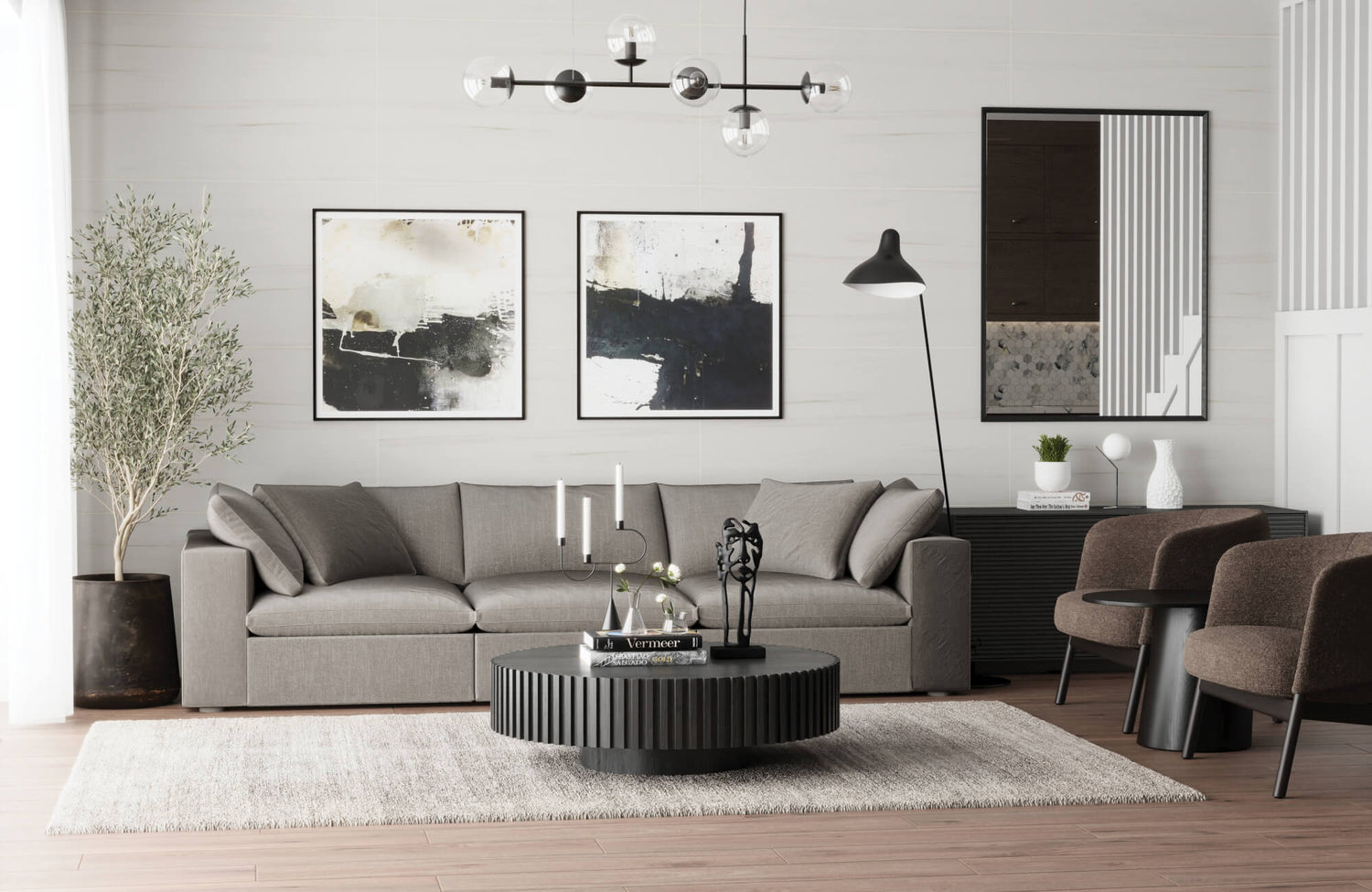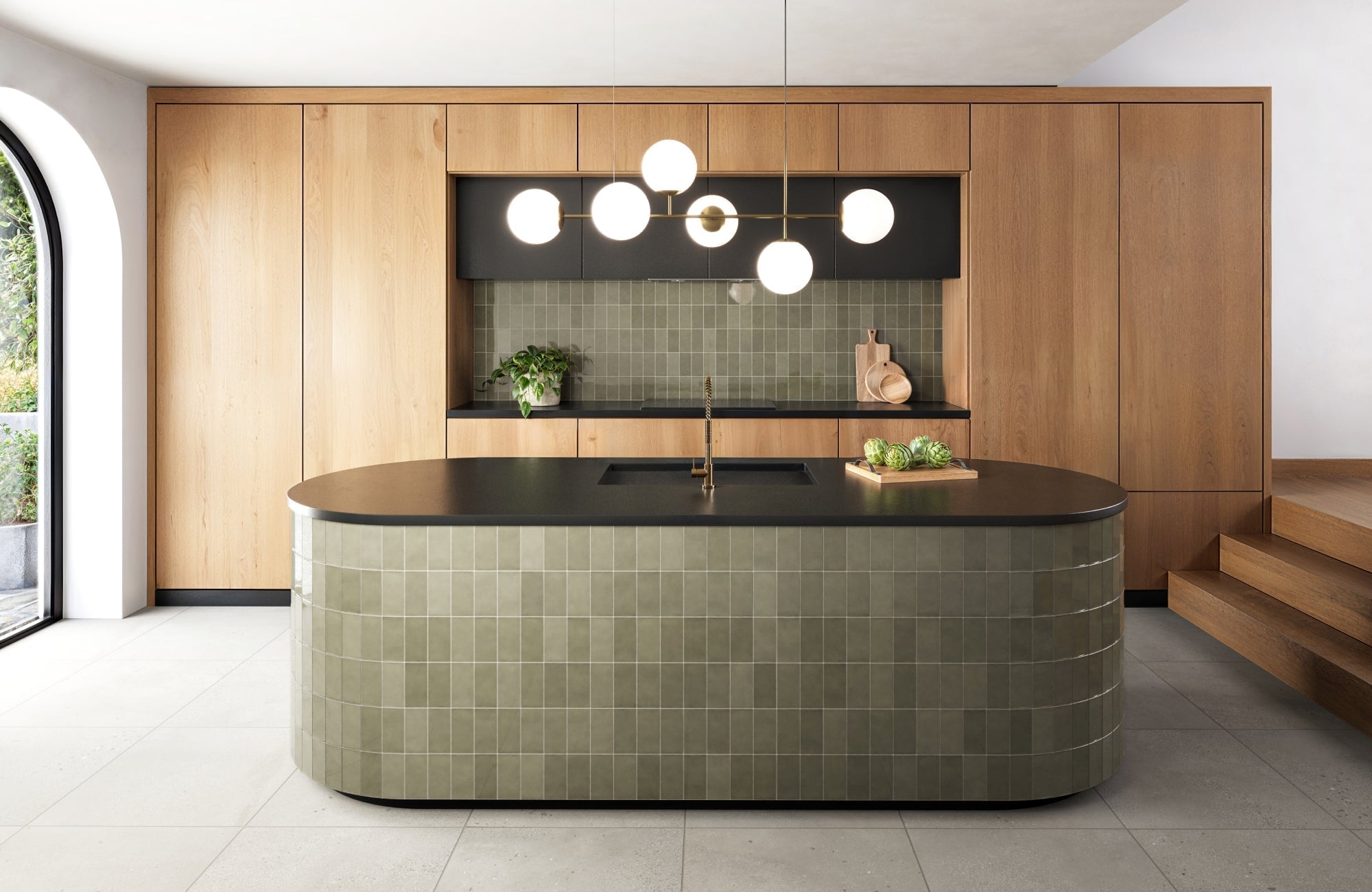Rugs play a crucial role in shaping the ambiance of a living room, offering both style and functionality. However, selecting the right size is essential for maintaining balance—one that’s too small may make the room feel disconnected and cramped, while an oversized rug can overwhelm the space and make it appear smaller. Finding the ideal balance requires careful consideration of several factors, including furniture arrangement, room size and shape, and personal style preferences.
Understanding Rug Placement and Its Impact
The strategic placement of a rug can transform the look and feel of your living room. Beyond simply covering the floor, a well-chosen rug can anchor furniture, define zones, and visually balance the room's proportions.
Anchoring Furniture
One of the primary functions of a rug is to anchor furniture groupings, creating a sense of unity and grounding the arrangement within the larger space. Imagine a living room with a sectional sofa and two armchairs. A well-placed rug that extends at least 18 inches beyond the front legs of the furniture will visually connect these pieces, defining a distinct conversation area. This creates a sense of spaciousness while ensuring the seating area feels comfortably contained within the rug's boundaries. A coffee table should also ideally sit entirely on the rug, while side chairs can either be partially or fully placed on the rug, depending on the desired aesthetic.
Another approach is to use a smaller rug to anchor a pair of armchairs facing each other, creating a cozy reading nook within a larger living room. Experimenting with different rug sizes and placements can significantly impact the overall feel of the room, from intimate and cozy to grand and expansive.
Defining Zones
In open-plan living spaces, rugs are invaluable tools for defining distinct zones. For instance, a large rug can anchor the seating area in a living room, while a separate smaller rug grounds the dining table and chairs nearby. This creates visual separation and helps to guide movement, preventing the space from feeling chaotic or overwhelming.
Moreover, a boldly patterned rug can highlight a conversation area, while a neutral-toned rug balances the dining space, creating a sense of visual contrast and hierarchy. Carefully selecting the size and placement of each rug ensures a harmonious flow throughout the space. The 8x10 rug size, for example, works well in open-plan layouts where furniture is partially on and off the rug, creating a seamless division between spaces.
Enhancing Room Proportions
Strategic rug placement can also help correct room proportions. In a narrow living room, a wide, rectangular rug can create the illusion of greater width, while a runner placed lengthwise can visually elongate the room.
For irregular spaces, such as long or angled rooms, experimenting with a large square or round rug can help to break up the length and create a more balanced layout. A 9x12 rug can ground a large space, ensuring the room feels well-proportioned, while a smaller 5x8 rug can provide structure in a compact or asymmetrical area.

Exploring Rug Styles and Their Influence
Beyond size and placement, the style and material of your rug will significantly impact the overall look and feel of your living room.
Low-Pile Rugs for Busy Areas
Low-pile rugs, with their short fibers, are ideal for active living rooms. The shorter pile height makes them resistant to wear and tear, minimizing the appearance of footprints, pet hair, and other signs of daily use.
A wide range of materials is suitable for low-pile rugs, each offering unique aesthetic and functional qualities. Wool, for example, is incredibly durable, stain-resistant, and naturally fire-retardant, while cotton rugs are known for their softness and breathability, making them ideal for warmer climates. For a rustic touch, jute rugs have a natural fiber, bringing an earthy aesthetic, and are highly durable, holding up well in heavily used areas.
High-Pile Rugs for Added Texture
High-pile rugs add luxury and warmth with their lush texture to any living room. The longer fibers create a plush and inviting surface that is incredibly comfortable to walk on and provides a sense of coziness.
However, due to their pile height, high-pile rugs are best suited for areas with less activity, as their longer fibers can easily trap dirt, dust, and pet hair, making them more challenging to clean. They are also more susceptible to matting and crushing, which can diminish their appearance over time.
Popular materials like silk, shag, and sheepskin are commonly used for high-pile rugs. Silk rugs are renowned for their lustrous sheen and luxurious feel, while shag rugs offer a playful, bohemian aesthetic. Sheepskin rugs provide a unique textural contrast and add a touch of rustic charm to any space.
Choosing the Right Rug Pattern Design
Rug patterns play a vital role in setting the tone of a room. Bold geometric patterns can add a dynamic and contemporary feel, while floral and botanical motifs can create a more traditional or romantic ambiance.
Beyond aesthetics, rug patterns can also be used to achieve specific design goals. For example, a large-scale pattern can visually expand a small space, while a subtle pattern can camouflage minor imperfections in the floor.
When choosing a rug pattern, it's essential to consider the existing decor. A busy patterned rug may overwhelm a room with already intricate details, while a plain rug may feel too bland in a space with minimal decor. Aim for a balance that complements the existing color palette and creates a cohesive overall aesthetic.
For example, a neutral-toned sofa can be paired with a boldly patterned rug to add visual interest. Conversely, a patterned sofa can be grounded by a plain rug to prevent the room from feeling overly busy. Ultimately, the choice of rug pattern is a matter of personal preference and should reflect the desired mood and style of the living room.

Considering Room Size and Shape
The ideal rug size will inevitably vary depending on the dimensions and configuration of your living room.
Small Living Rooms
When choosing the right rug for small living spaces, it's crucial to prioritize scale and proportion. Oversized rugs can quickly overwhelm the space, making it feel cramped and cluttered, while smaller rugs can anchor a key furniture grouping, such as a sofa and coffee table, without dominating the room. For instance, if you have a sofa and two armchairs, a rug size of 6x9 feet would be appropriate, leaving enough floor space visible to maintain an open feel.
A pale rug with a delicate pattern can also visually expand your floor area, making the room feel airier and more open. Avoid dark, heavy rugs in small spaces, as these can make the room feel even smaller and more enclosed.
Large Living Rooms
Larger living rooms offer greater flexibility in rug selection, allowing for bold design choices that enhance the space. Oversized rugs can anchor multiple furniture pieces, creating a cohesive and grand statement. For instance, a 9x12-foot rug, such as the Bowie Wool Blend Rug in Pearl / Smoke, shown in the photo above, can extend beyond a sectional sofa, incorporating armchairs and even a coffee table within its boundaries.
Open-plan living rooms can also benefit from multiple rugs to define distinct zones. A generous 8x10-foot rug can anchor the main seating area, while a smaller 5x7-foot rug can ground a dining table or a cozy reading nook. This strategic placement helps establish a clear visual hierarchy, preventing the space from feeling overly vast or disconnected. Additionally, the right rug size and placement can influence the visual weight of large furniture pieces, ensuring balance and proportion within the room.
Irregular Spaces
Rooms with unusual shapes, such as L-shaped living rooms or those with angled walls, require creative rug placement strategies. In L-shaped spaces, consider using two smaller rugs to define each section of the L, or a single large rug that accommodates both sections. For instance, a 5x7 foot rug could anchor one section of the L, while a 4x6 foot rug could define the other.
For rooms with angled walls, custom-sized rugs can be a valuable solution, ensuring a perfect fit and maximizing floor space. Alternatively, consider using a series of smaller rugs to define different areas within the irregular space, such as a reading nook, a conversation area, and a small workspace. A combination of a 3x5 foot rug for the reading nook and a 4x6 foot rug for the conversation area could be effective in this scenario.
Regardless of the room's shape, the goal is to create a balanced and harmonious aesthetic. Experiment with different rug sizes, shapes, and placements to find the best solution for each unique space.
Other Important Considerations Beyond Size
While rug size is undoubtedly crucial, several other factors play a significant role in selecting the perfect rug for your living room.
Rug Thickness and Floor Height
Rug thickness is another crucial factor to consider, as it can significantly impact the overall aesthetic and functionality of the space. Excessively thick rugs can obstruct doorways, interfere with furniture placement, and make it difficult to open and close doors.
Furthermore, thick rugs can significantly raise the floor level, creating a tripping hazard and making it difficult for individuals with mobility limitations to navigate the space. Conversely, excessively thin rugs may feel inadequate, lacking the desired level of comfort and sound absorption.
When selecting rug thickness, consider the height of your furniture. Ideally, the rug should not impede the movement of furniture legs, allowing them to glide smoothly across the floor. Personal preferences also play a significant role. If you prioritize comfort, a thicker rug may be preferable, while those seeking a more streamlined aesthetic may prefer a thinner option.
Safety First: Non-Slip Rugs and Padding
Safety is paramount when selecting and placing rugs in your home. Smooth, hard surfaces like hardwood and tile can make rugs prone to slipping, increasing the risk of falls, particularly for children and the elderly.
To prevent accidents, the use of non-slip rug pads is highly recommended. These specialized underlays provide a secure grip, anchoring the rug to the floor and minimizing the risk of slips and falls.
Beyond safety, rug pads offer numerous benefits. They provide additional cushioning, enhancing comfort and reducing fatigue. Rug pads also help to absorb sound, minimizing noise transmission between floors. Furthermore, they protect the rug from wear and tear, extending its lifespan and preserving its appearance.
When choosing a rug pad, consider the type of rug and the floor surface. Felt pads are a versatile option suitable for most rug types and floor surfaces. Rubber pads, on the other hand, offer superior grip on smooth surfaces like hardwood and tile, but may not be suitable for delicate rugs.
Maintenance and Care
Proper rug maintenance is essential to ensure their longevity and beauty. Regular vacuuming is crucial to remove dust, dirt, and debris. For high-pile rugs, use a vacuum with a rotating brush attachment to prevent matting.
Professional cleaning is also recommended periodically to remove deep-seated dirt and stains. The frequency of professional cleaning will depend on the type of rug, level of use, and the presence of pets.
To protect your rugs from spills and stains, act quickly. Blot up spills immediately with a clean, absorbent cloth. Avoid rubbing, as this can spread the stain and damage the rug fibers. For stubborn stains, consult a professional rug cleaning service.
Key Insights
Choosing the right rug size for a living room requires careful consideration of several factors, including furniture arrangement, room size and shape, rug style, and personal preferences. Understanding how rugs can anchor furniture, define zones, and enhance room proportions is crucial for creating a harmonious and functional space.
Ultimately, the perfect rug size is a matter of personal taste and individual needs. Consider the desired aesthetic, the level of usage in the room, and the overall functionality of your space. Don’t be afraid to experiment with different sizes and placements to find the ideal solution that complements your unique style and enhances the comfort and beauty of your living room!









